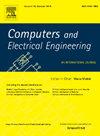HaKAN-6T:在基于rpl的6TiSCH网络中使用CoJP检测和缓解DIS攻击的混合算法
IF 4.9
3区 计算机科学
Q1 COMPUTER SCIENCE, HARDWARE & ARCHITECTURE
引用次数: 0
摘要
物联网依赖于强大的网络协议,如低功耗和有损网络路由协议(RPL),以实现资源受限环境下的高效通信,特别是在将IEEE 802.15.4e TSCH与IPv6相结合的6TiSCH网络中。然而,RPL仍然容易受到控制消息攻击,例如DIS泛洪和等级操纵,这会降低网络稳定性,增加能耗并破坏性能。为了应对这些挑战,本研究引入了HaKAN-6T,这是一种混合安全框架,旨在通过集成的检测和缓解机制增强基于rpl的6TiSCH网络。HaKAN-6T结合了用于安全设备认证的约束连接协议(CoJP)和用于实时异常检测的网络分析器。CoJP确保只有经过授权的设备加入网络,防止未经授权的访问,而network Analyzer则监控节点行为,以识别诸如DIS泛洪、增加等级和减少等级攻击之类的攻击。HaKAN-6T的性能通过在30和40个节点的网格和随机拓扑中进行广泛的模拟来评估,测量关键指标,如数据包传输比(PDR)、端到端延迟(E2ED)、控制数据包开销、平均功耗(APC)、处理开销和平均检测延迟。结果表明,HaKAN-6T显著减轻了DIS泛洪攻击的影响,在30节点场景下,将控制数据包开销减少了28.5%,将PDR从82.7%提高到88.45%。针对增加的秩攻击,它最大限度地减少了E2ED,减少了19.3%的延迟,同时保持了稳定的网络拓扑。对于降低等级攻击,它可以防止过度的拓扑变化,并降低APC高达10.5%,提高能源效率。本文章由计算机程序翻译,如有差异,请以英文原文为准。
HaKAN-6T: Hybrid algorithm for DIS attack detection and mitigation using CoJP in RPL-based 6TiSCH networks
The Internet of Things relies on robust networking protocols like the Routing Protocol for Low-Power and Lossy Networks (RPL) to enable efficient communication in resource-constrained environments, particularly in 6TiSCH networks combining IEEE 802.15.4e TSCH with IPv6. However, RPL remains vulnerable to control message attacks, such as DIS flooding and rank manipulation, which degrade network stability, increase energy consumption, and disrupt performance. To address these challenges, this study introduces HaKAN-6T, a hybrid security framework designed to enhance RPL-based 6TiSCH networks through integrated detection and mitigation mechanisms. HaKAN-6T combines the Constrained Join Protocol (CoJP) for secure device authentication with a Network Analyzer for real-time anomaly detection. CoJP ensures only authorized devices join the network, preventing unauthorized access, while the Network Analyzer monitors node behavior to identify attacks like DIS flooding, increased rank, and decreased rank attacks. The performance of HaKAN-6T is evaluated through extensive simulations in grid and random topologies with 30 and 40 nodes, measuring key metrics such as packet delivery ratio (PDR), end-to-end delay (E2ED), control packet overhead, average power consumption (APC), processing overhead, and average detection latency. The results demonstrate that HaKAN-6T significantly mitigates the impact of DIS flooding attacks, reducing control packet overhead by up to 28.5% and improving PDR from 82.7% to 88.45% in 30-node scenarios. Against increased rank attacks, it minimizes E2ED, reducing delays by 19.3% while maintaining a stable network topology. For decreased rank attacks, it prevents excessive topology changes and lowers APC by up to 10.5%, enhancing energy efficiency.
求助全文
通过发布文献求助,成功后即可免费获取论文全文。
去求助
来源期刊

Computers & Electrical Engineering
工程技术-工程:电子与电气
CiteScore
9.20
自引率
7.00%
发文量
661
审稿时长
47 days
期刊介绍:
The impact of computers has nowhere been more revolutionary than in electrical engineering. The design, analysis, and operation of electrical and electronic systems are now dominated by computers, a transformation that has been motivated by the natural ease of interface between computers and electrical systems, and the promise of spectacular improvements in speed and efficiency.
Published since 1973, Computers & Electrical Engineering provides rapid publication of topical research into the integration of computer technology and computational techniques with electrical and electronic systems. The journal publishes papers featuring novel implementations of computers and computational techniques in areas like signal and image processing, high-performance computing, parallel processing, and communications. Special attention will be paid to papers describing innovative architectures, algorithms, and software tools.
 求助内容:
求助内容: 应助结果提醒方式:
应助结果提醒方式:


